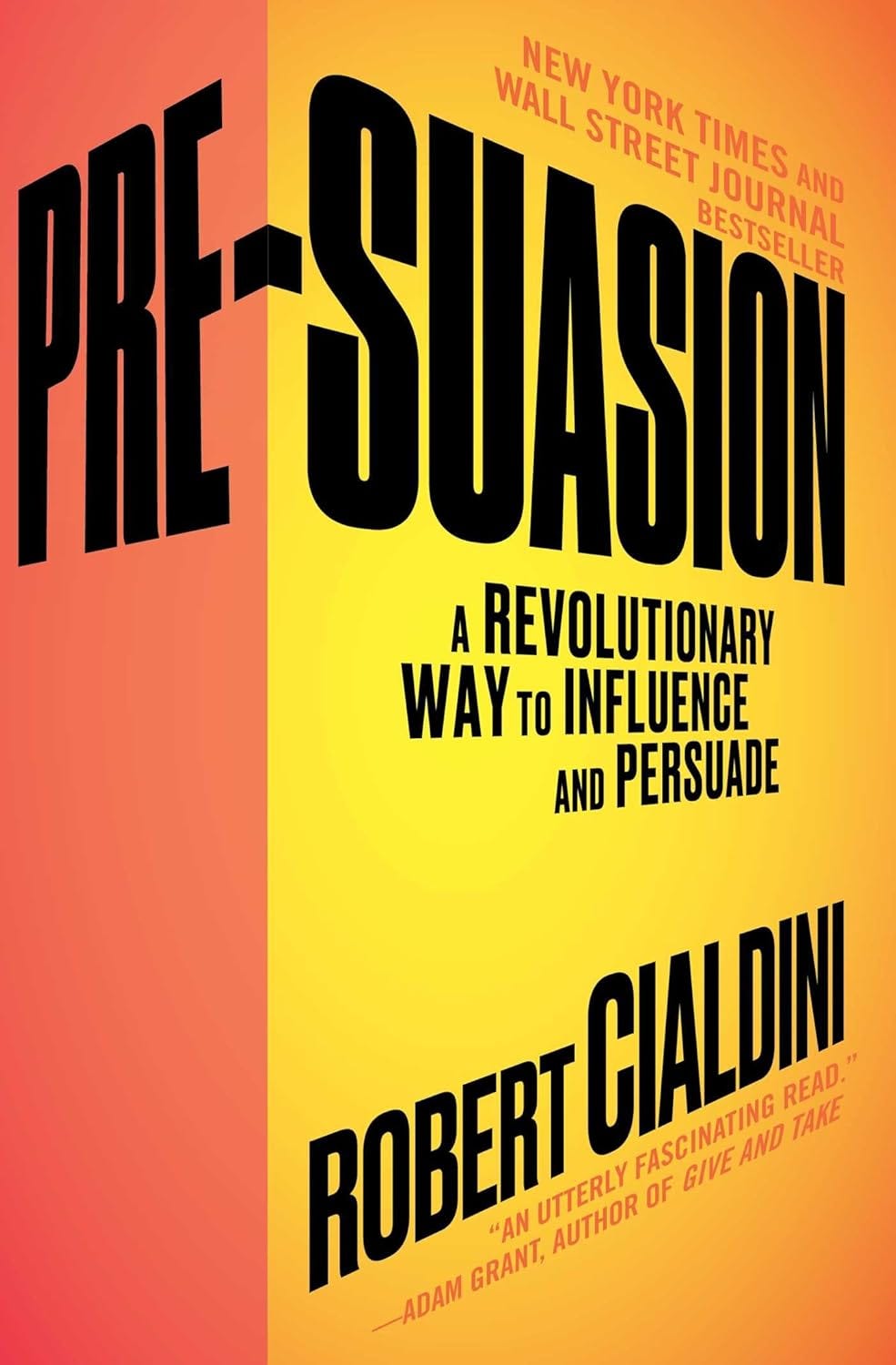Pre-suasion Tactics Every Founder Needs To Know
This Friday -> "Pre-Suasion: A Revolutionary Way to Influence and Persuade" by Robert B. Cialdini [3 min reading]
On Startup Salad I break down a business book’s key takeaways in a simple, digestible format, just like a good salad!
Hey, it’s Fede!
The most powerful word in the business world is simple and just 3 letters long:
“Yes!”
This simple word is what makes the difference between success and failure.
Cliché? Maybe.
What many people don’t realize is that there are proven techniques that can increase your chances of getting a "yes."
Today, we’re going to explore them.
To explore this topic, I looked at the work of Robert Cialdini, who spent many years studying human behavior to understand how people make decisions.
Today’s book: Pre-Suasion: A Revolutionary Way to Influence and Persuade by Robert Cialdini.
Here is a quick guide based on the book (with the addition of some personal insights):
What Is Pre-suasion?
Pre-suasion, do you see how this word is written?
It's not a mistake. It’s written this way to emphasize a fundamental concept which is that preparing your audience’s mindset before delivering your message is more influential than the message itself.
One of the key things that makes the best salespeople stand out is not only how they deliver the message, but what they do beforehand. We will dive deeper into this topic soon, but first, let’s clarify this:
The message = It can be your product, your vision, your service, your business plan, or anything you are trying to “sell”.
The audience = It could be one person in a café, three people in a conference room, or an entire theater.
The Two Factors Where Pre-suasion Has the Most Impact
Instead of trying to change what people think (which is hard), change what they focus on by guiding their attention (which is easier).
The goal is to guide the audience so that they have the right ideas in their minds, making them ready to say "yes" to something that has yet to be proposed.
There are two key points that Pre-suasion can work on:
Priming: The idea we formed about a topic in the past influences our future decisions. Our past experiences and the information we’ve already been exposed to shape how we perceive new information and guide our choices.
Anchoring: The first information we receive about something, just before making a decision, strongly influences what we choose. A common example is the "80% off" sale. When we see such a big discount, the product seems much more appealing, even though the original price was actually much lower than it appears.
In practice, check step 3 to see what you can actually do.
How to Prepare Your Audience: 3 Things You Can Do 🔥
You have the opportunity to prepare your audience in three different ways:
Raise Awareness Before Presenting Your Message: This means, before delivering your message, start by speaking more generally and providing information that will raise awareness, make your audience more informed, and capture their interest by showing them a potential opportunity.
For example, if you have a startup in the cleantech sector (sustainability), you could start by discussing the global challenges we face, the urgency of the situation, and the opportunity that a new technology presents. Then, you can introduce your startup as part of the solution.
The audience’s opinion of themselves: People’s self-perception can deeply influence how they engage with new ideas. You can start by asking questions like, "Are you someone interested in ocean pollution?" If they answer "yes," they have already created an identity for themselves as someone who cares about the issue. So, when you talk about your startup that tackles ocean pollution, they will feel compelled to act as if they are genuinely interested in your solution. This technique is very powerful, keep it in mind! 🔥
The Environment You’re In: The context in which you present your message matters.
A great example comes from many fast fashion brands. They invest heavily in designing stores that resemble luxury boutiques, even though they sell low-quality products. This works because the environment shapes how the message is perceived. By creating a certain atmosphere, they influence how customers view the products, making them appear more valuable than they really are.
All of these techniques give you the chance to prepare your audience for the message you’re about to present. These are scientifically proven techniques, so the chances of them working are very high. Take a look at the next step to understand in which contexts you can apply them.
Implement Pre-suasion Across Your Startup
The great thing about pre-suasion is that it can be used anywhere in a startup journey, here are some examples:
Investor meetings: Start by creating a positive mental framework before presenting your offer.
Customer pitches: Prime their thinking by associating your product with success, value, and the solution to a real need.
Team motivation: Use success-oriented cues to increase motivation and performance.
Have you ever used one of these techniques? Let me know! I'd love to hear how it worked for you.
See you next Friday,
Federico Lorenzon









